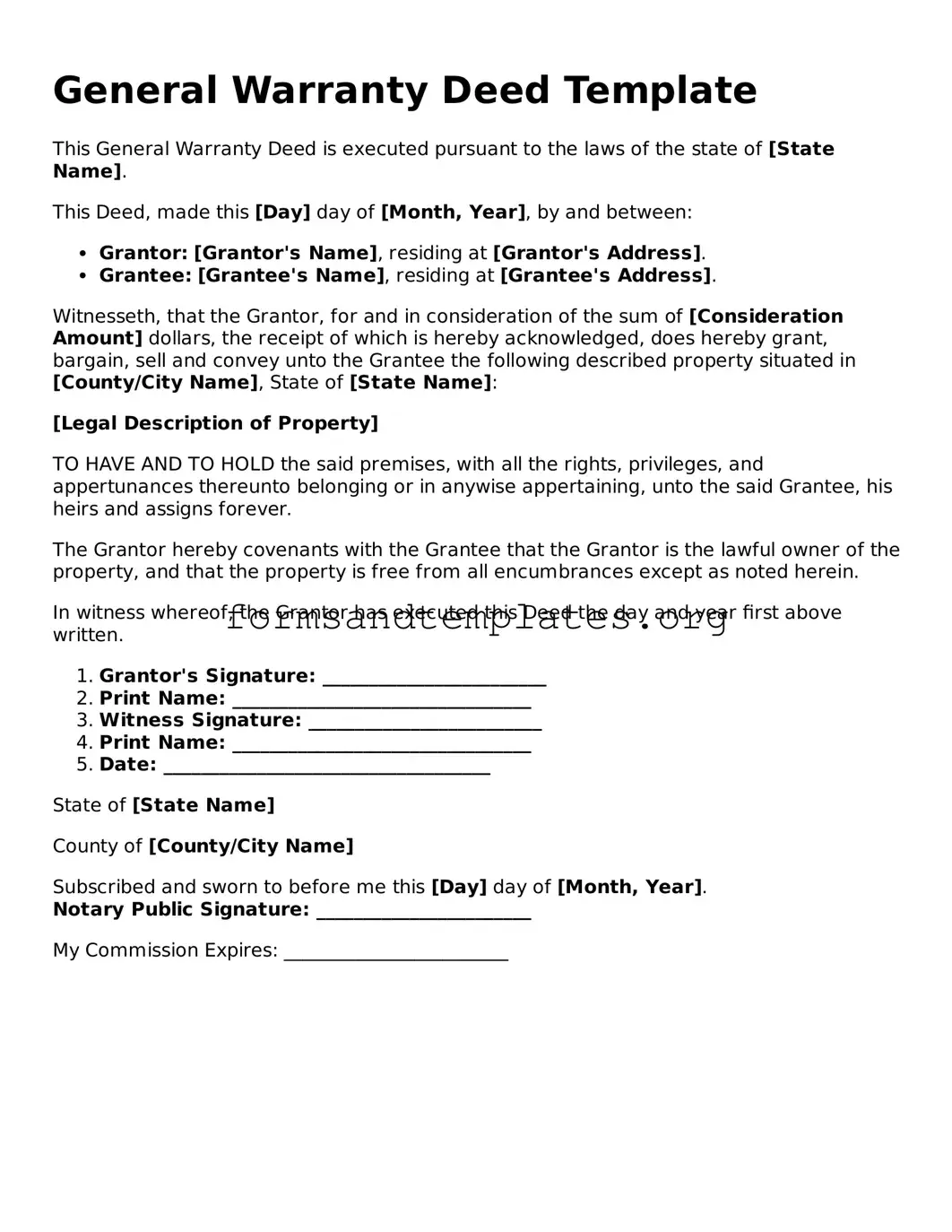General Warranty Deed Template
This General Warranty Deed is executed pursuant to the laws of the state of [State Name].
This Deed, made this [Day] day of [Month, Year], by and between:
- Grantor: [Grantor's Name], residing at [Grantor's Address].
- Grantee: [Grantee's Name], residing at [Grantee's Address].
Witnesseth, that the Grantor, for and in consideration of the sum of [Consideration Amount] dollars, the receipt of which is hereby acknowledged, does hereby grant, bargain, sell and convey unto the Grantee the following described property situated in [County/City Name], State of [State Name]:
[Legal Description of Property]
TO HAVE AND TO HOLD the said premises, with all the rights, privileges, and appertunances thereunto belonging or in anywise appertaining, unto the said Grantee, his heirs and assigns forever.
The Grantor hereby covenants with the Grantee that the Grantor is the lawful owner of the property, and that the property is free from all encumbrances except as noted herein.
In witness whereof, the Grantor has executed this Deed the day and year first above written.
- Grantor's Signature: ________________________
- Print Name: ________________________________
- Witness Signature: _________________________
- Print Name: ________________________________
- Date: ___________________________________
State of [State Name]
County of [County/City Name]
Subscribed and sworn to before me this [Day] day of [Month, Year].
Notary Public Signature: _______________________
My Commission Expires: ________________________
